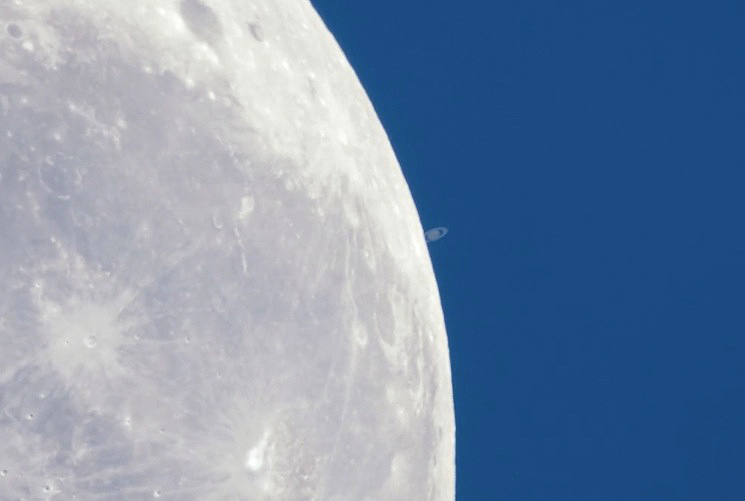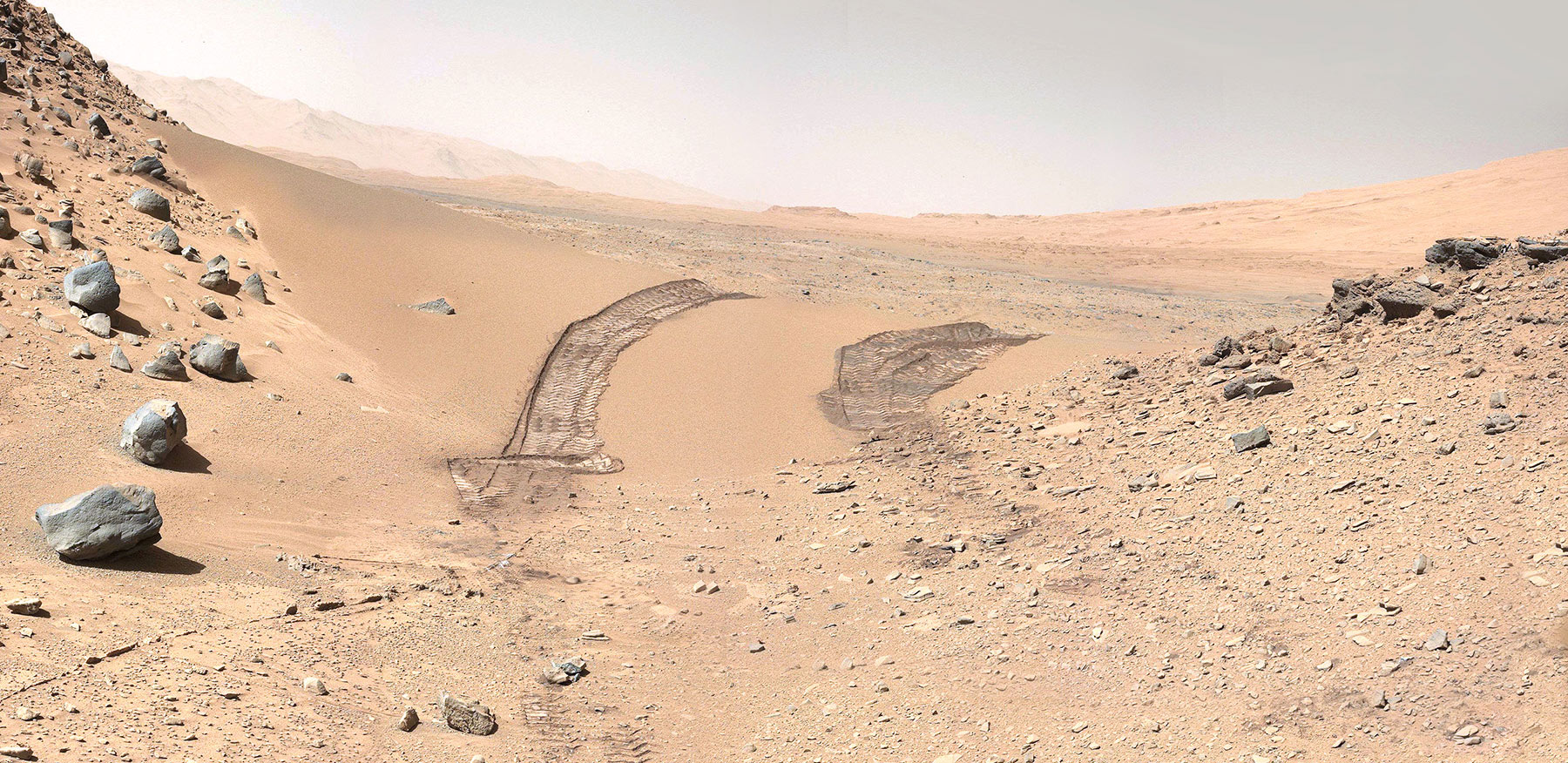
What’s Up in Space News? March 2014
March 2014 :
If you’re reading this then there’s probably a good chance that, like me, you have a tireless fascination with space and astronomy. And while we may not have any Moon bases or footprints on Mars yet, that doesn’t mean space exploration isn’t very much alive and well! There are many exciting missions taking place right now that are expanding our knowledge of the Universe and the solar system we live in. Here’s a look at just a few of the biggest stories in space exploration from the past several weeks.
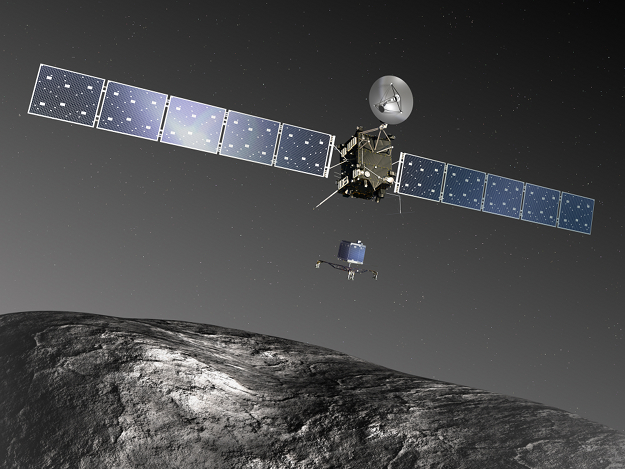 Rosetta Wakes Up
Rosetta Wakes Up
On Jan. 20, the European Space Agency’s Rosetta spacecraft awoke after spending over two and a half years in hibernation. Launched in March 2004, Rosetta has spent the past decade soaring through the inner solar system. It flew past Mars and Earth several times and visited two asteroids – 2867 Steins and 21 Lutetia.
Now that Rosetta is awake and its health confirmed, it will enter the home stretch of its ultimate mission: a rendezvous and orbit of the comet 67P/Churyumov-Gerasimenko (aka “Cherry-Gerry”) in August and, in November, the deployment of its Philae lander onto the comet’s nucleus. It’ll be the first time a soft landing on a comet has ever been attempted… very exciting! Read more about Rosetta here.
The Moon “Photobombed” the Sun
We didn’t get to see an eclipse on Jan. 31, but that doesn’t mean there wasn’t one – NASA’s Solar Dynamics Observatory had a front-row seat to its very own eclipse that day, from space! As SDO orbits Earth, during certain times of the year the Moon periodically passes between it and the Sun, creating brief partial eclipses as seen by the spacecraft. Jan. 31 was one of those times, and it was the longest ever captured on camera by SDO. Watch it here.
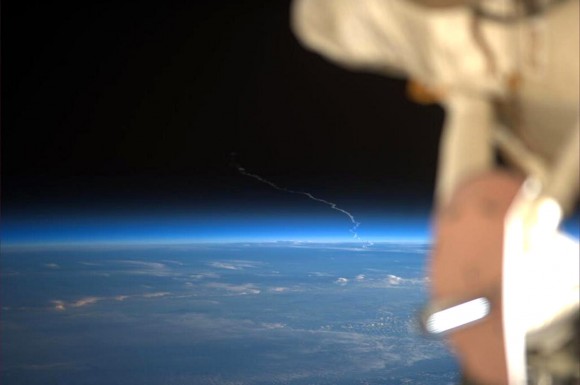 Rocket Launch Seen From Space
Rocket Launch Seen From Space
There are six humans living and working aboard the International Space Station as you read this, collectively traveling 17,500 mph 260 miles or so above the Earth’s surface. The views they get as they circle the world 16 times a day are, in a word, breathtaking, and on Feb. 6 NASA astronaut Rick Mastracchio got an extra surprise as he looked out his window: the launch of an Ariane 5 heavy-lift rocket from Europe’s spaceport in French Guiana. He quickly snapped a photo and shared the image on Twitter, to the instant delight of his 43,200 followers. (And who says social media is a a waste of time?) Read more -- and watch a video of the launch -- here.
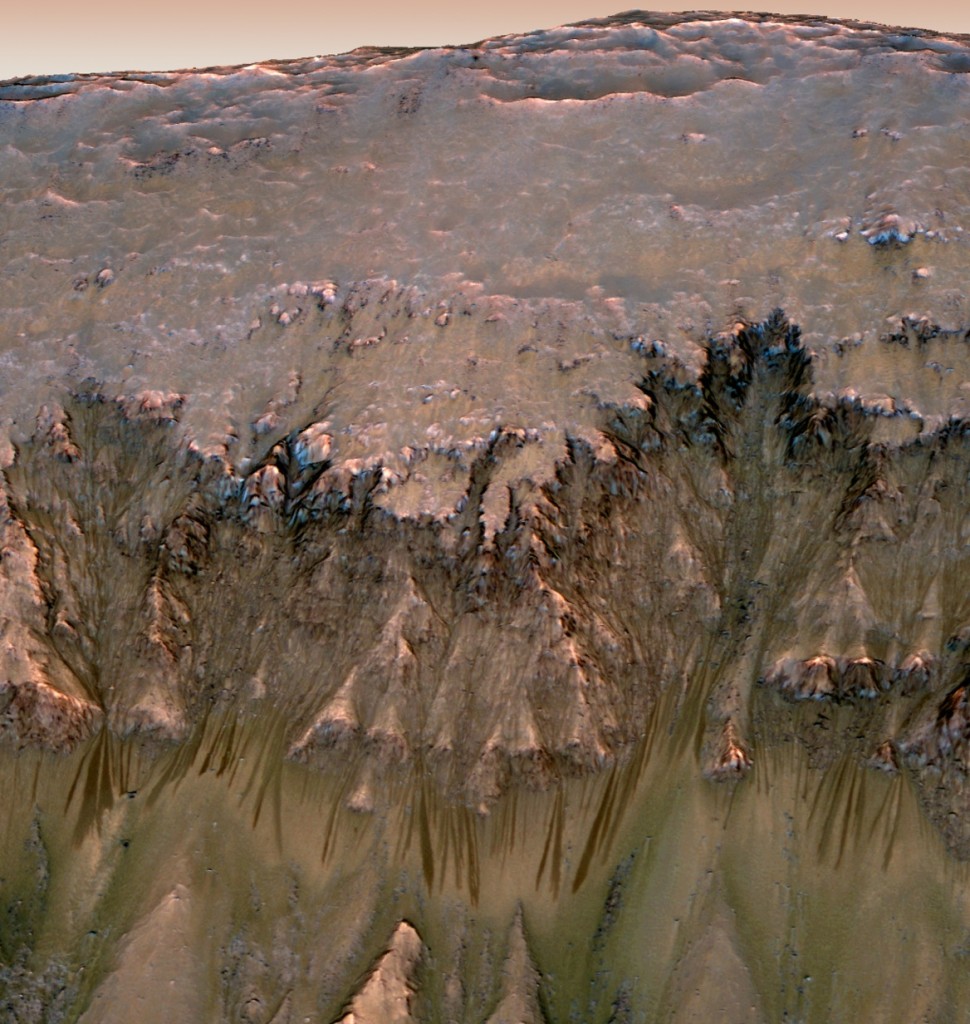 Signs of Water on Mars
Signs of Water on Mars
As scientists explore Mars with orbiting spacecraft and six-wheeled roving robots, the Big Question remains yet unanswered: could there be life on the Red Planet, either now or some time in its past? In order for that to even be a remote possibility, researchers agree that one prerequisite must exist – namely, liquid water. And while some water vapor can be found in Mars’ thin atmosphere and plenty of water ice exists below its surface and in its polar caps, flowing H2O on Mars’ surface remains elusive.
That’s why researchers are so interested in curious dark streaks that have been observed from orbit by NASA’s Mars Reconnaissance Orbiter, appearing on steep slopes in Mars’ mid-latitudes. Are they outpourings of salty water from melting subsurface ice? Or are they the result of a drier process in action? Read more here.
 Curiosity Goes Dune Buggying
Curiosity Goes Dune Buggying
Now in its 556th “sol” on Mars (and counting) NASA’s Curiosity rover continues to explore the interior of Gale crater, driving inexorably toward the hummocky slopes of Mount Sharp (aka Aeolis Mons). The rugged, rocky terrain of Mars has taken its toll on Curiosity’s 20” wheels, though, gouging them with pits, cuts, and scrapes (good thing they’re run-flats!)
In order to reduce wheel wear, mission engineers have chosen to take smoother paths where possible, and the rover just crossed through a sandy dune-filled pass nicknamed Dingo Gap into an open area called Moonlight Valley. After a little dune buggying, Curiosity turned around and is now roving in reverse in an attempt to further save tire wear. Moonwalking on Mars? Read more.
NASA’s Newest Lunar Orbiter Returned First Moon Images
Launched back in September, NASA’s LADEE (pronounced “laddie”) lunar orbiter is currently in an equatorial orbit around the Moon, investigating the curious electrostatic effects of fine lunar dust on its incredibly thin atmosphere. (Yes, the Moon has an atmosphere of sorts, even if it’s just composed of sparsely-held atoms and ions.) On Feb. 8, LADEE snapped some images of the Moon while orienting itself with its star tracker camera, giving mission scientists – and space fans -- a treat when they downlinked the data. See the images here.
Saturn Slips Behind the Moon
As the Moon moves into an orbital orientation more in-line with the plane of the solar system, occultations of the planets by the Moon will become more and more common. One of the most dramatic ones to occur recently was an occultation of Saturn on Feb. 22. While we couldn’t see it from here in Rhode Island, it was visible to skywatchers in Australia and astrophotographer Colin Legg captured the dramatic event on video from Perth early that morning. Watch it here.
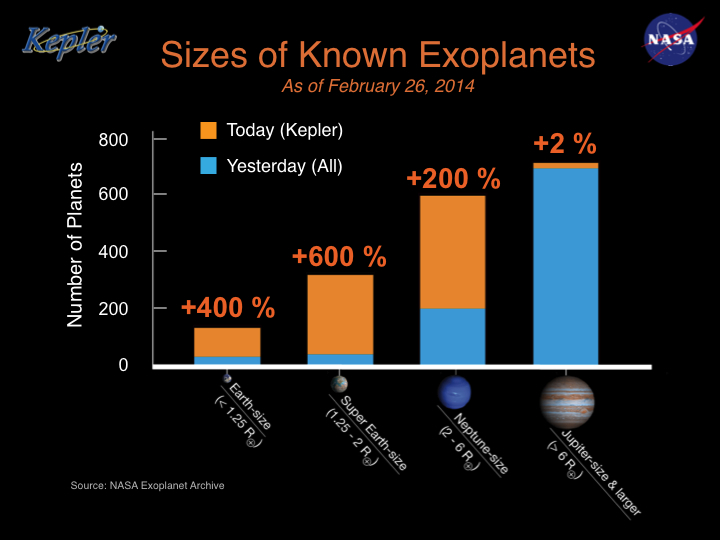 Kepler’s Exoplanet Count Doubles
Kepler’s Exoplanet Count Doubles
There was a time not that long ago (at least it doesn’t feel that long ago!) when the idea of finding planets outside our solar system was only in the realm of science fiction. Now exoplanets are science fact – and there’s a lot of them out there! Just this past week the team from NASA’s Kepler mission nearly doubled the total number of exoplanets discovered in our galaxy thus far with the announcement of 715 more confirmed extrasolar worlds.
Many of the newly-confirmed exoplanets – “confirmed” meaning they aren’t just likely candidates but have actually been repeatedly detected using the transit method Kepler uses -- are large worlds knows as mini-Neptunes and super-Earths orbiting closely to their host stars. But four of them are within the habitable “Goldilocks” zones of their stars, meaning that liquid water could stably exist on their surfaces.
Are we the only planet in the universe with life? With all of the other worlds that simply must be out there – including the ones scientists are now actually finding -- even if only a small fraction are habitable that still leaves a lot of possibilities. Read more here.
So as you can see there really has been a lot going on “up there” -- and those were only just a few of the recent stories from the space news world! There were many more, including:
…a visual demonstration of gravity courtesy of Saturn’s moon Prometheus and the Cassini spacecraft… Jupiter’s largest moon Ganymede got a new map… SDO celebrated four years of observing the Sun… a runaway star was seen shocking interstellar space… strange findings about the recent supernova in M82… China's Yutu rover survived two lunar nights but suffers technical difficulties… and yet another meteorite has been found holding tantalizing hints at the possibility of ancient Martian life. It’s an exciting time for space exploration, and there’s only more to come. I can’t wait to see what the next month brings!
Have any questions about these stories or want to know where you can learn more? Feel free to contact me at jpmajor@me.com, and follow me on Twitter @JPMajor and on Facebook as LightsInTheDark. Ad astra!
Jason is a freelance graphic designer and a space news blogger currently living in Warwick, RI. He writes for Universe Today, Discovery News, and on his blog LightsInTheDark.com. He has also been featured on National Geographic News, Space.com, io9.com, PhysOrg, NBC News Cosmic Log, and has attended several launch events at NASA’s Kennedy Space Center.



